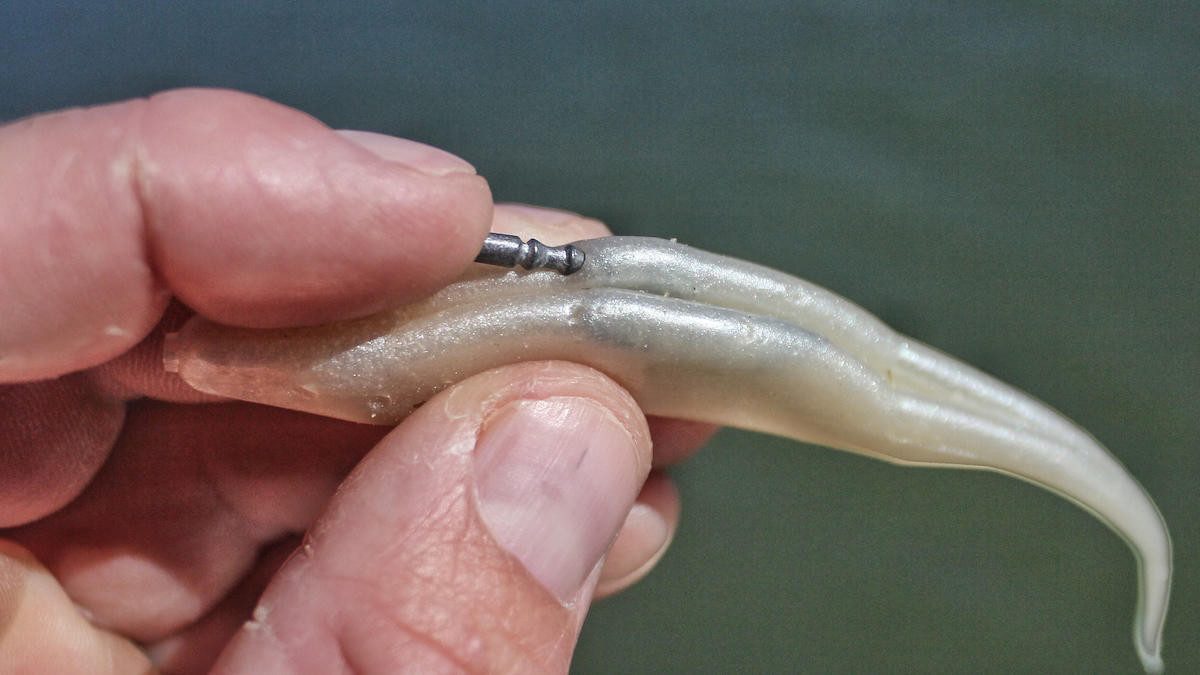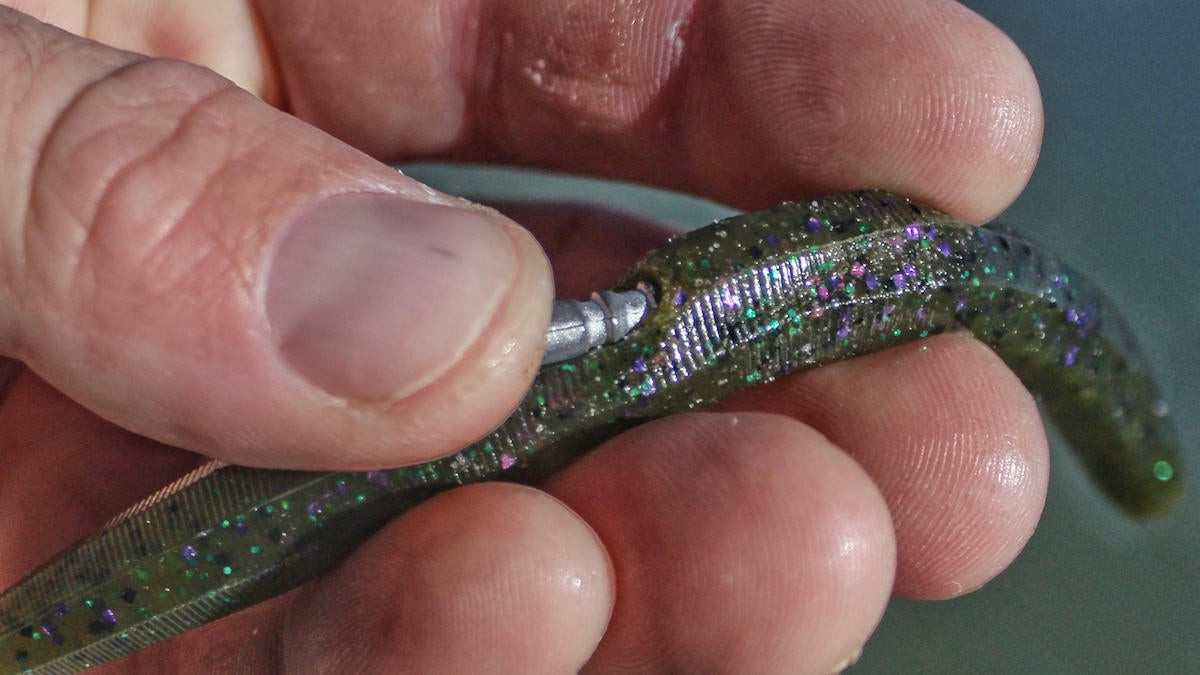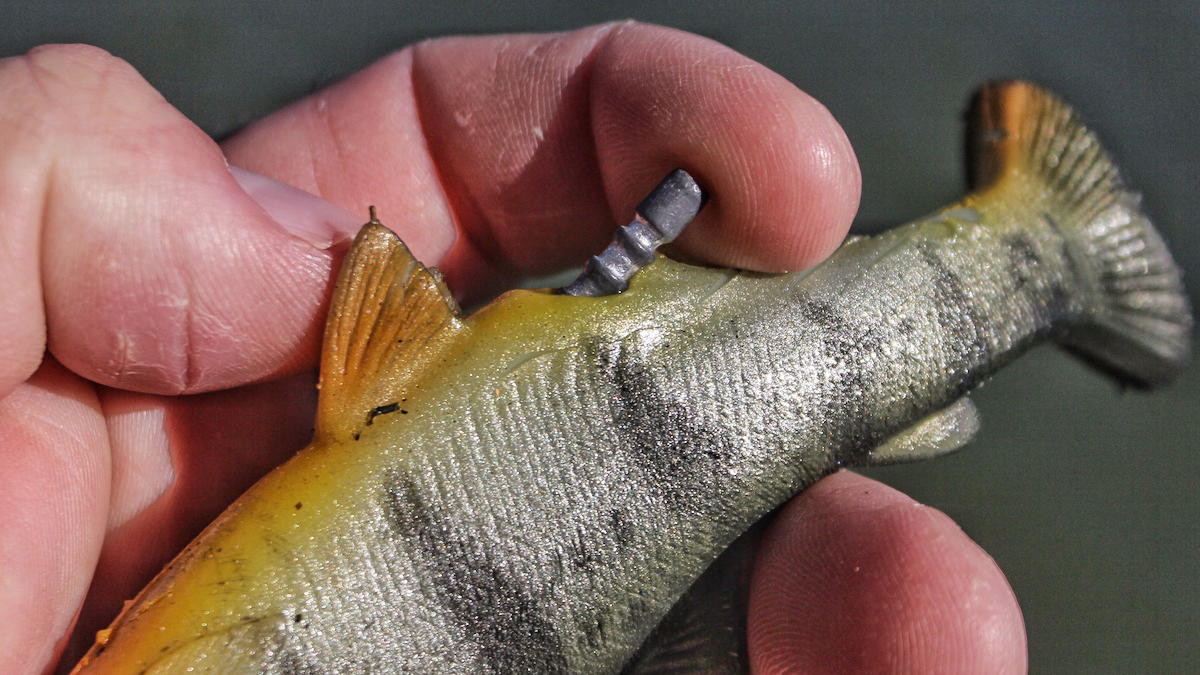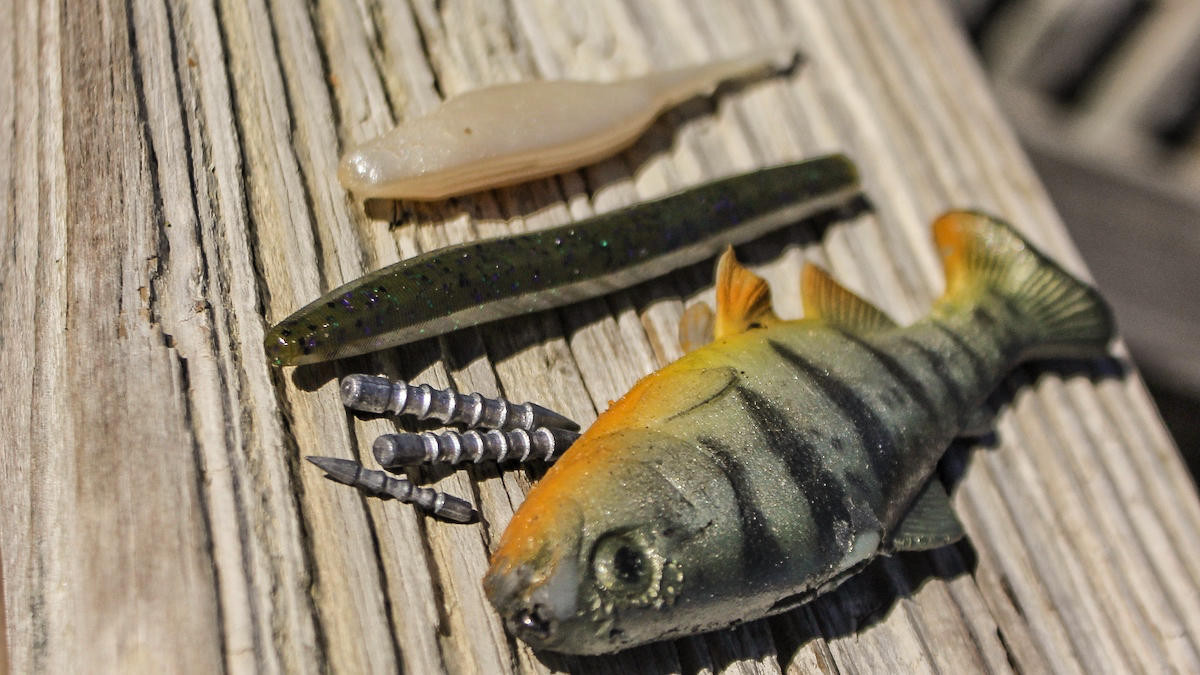Warning: Undefined variable $k in /home/nginx/domains/wired2fishcom.bigscoots-staging.com/public/wp-content/themes/understrap-child-0.6.0/functions.php on line 984
Warning: Undefined variable $k in /home/nginx/domains/wired2fishcom.bigscoots-staging.com/public/wp-content/themes/understrap-child-0.6.0/functions.php on line 987
I’m not the most proficient when it comes to finesse bass fishing. We’ve touched on that a few times here before but I always feel the need to bring it up anytime we enter the finesse fishing realm. I do try to get better at it though, because I am curious by nature and want to be a better angler.
That curiosity carries me right on by the normal application of some finesse tools and techniques at times. One such instance is the basis of this article. While messing around with a Neko rig, I thought to myself, “Self, couldn’t you just put this weight in the middle of the wacky rig and get it to sink a good bit faster but stay horizontal?”
I had also heard professional angler Brandon Palaniuk talking about how he uses Neko weights to weight big swimbaits. These two things made me curious too to see what would happen if I weighted a Fluke down with Neko weights. So I went out to the test tank, also known as my parents’ swimming pool, to conduct my experiments. Here are my experiences with 3 alternative ways to use a Neko rig.

Fluke
The Fluke was a little tricky. And yes, I’m talking about the Zoom Super Fluke when I say Fluke, not the original Fluke which is a good bit smaller. But before we talk about how to weight a Fluke and what happens when you do, it’s a fair question to ask why you would even want to.
My initial thoughts were that weighting the nose of a Fluke could be helpful in that it might make the Fluke swing further from side to side. So you could fish it along docks and the bait would swing further underneath them. Another cool application would be for bed fishing. A Fluke is already a great bait around the spawn but now you could work it up to the bed and then let it fall into the bed where it would look like a baitfish pecking around.
What I found when weighting the bait in the nose is that it doesn’t really swing out any farther. It does look killer on the bottom and I think it would make a great bed-fishing presentation. But what all that led to was me putting the weights into the midsection instead. I tried putting a 1/8-ounce VMC Neko Weight in the back and that did two things. It let me throw the bait a lot farther, but it also rolled the bait over so that it swam upside down on the retrieve. The action wasn’t really affected however, even though the bait was inverted.
But this kind of bothered me a bit so I tried taking two smaller 1/16-ounce weights and putting them in the bottom of each side of the Fluke’s belly. This kept the bait upright and moved the weight from the back so there would be less chance of it interfering with the hookup also. Where I think this will really shine is when fishing for schoolers. A Fluke is a great bait for schooling fish, but the fish are often out of reach. This added about 20 feet of range when chucking it around the yard.

Wacky rig
After looking around a bit, perhaps I’m a little late to the party on this one. Apparently a lot of people are already weighting wacky rigs. I mean, in essence, that’s what a Neko rig is, too; a weighted wacky rig. But that’s not exactly what I’m talking about here.
I found a lot on using jigheads to weight wacky rigs. And I have used little weighted jig heads at times myself over the years, like Jackall’s Weedless Wacky Jig Head. This method became pretty popular back in the day and was widely referred to as a Flick Shake, since that was the name of Jackall’s worm that was usually used with their jighead.
But still, I liked the idea of concealing the weight within the worm. So I tried sliding a Neko weight into the middle of the worm as opposed to one end or the other. The result was pretty sweet. Yes, there’s a rigid section in the middle where the weight is, but both ends still shimmy on the fall just like a normal wacky rig and the bait keeps its horizontal fall.
I think this will be extremely effective when fishing around docks and marinas where fish will suspend deeper at times along poles and cables. The bait falls about twice as fast, which is still slow enough to pester a bass into biting but cuts the wait time in half. A couple other great places to try this are around brush piles and standing timber.

Swimbait
I’ve heard Brandon Palaniuk talking about this one briefly. He found that adding Neko weights to a larger swimbait, like a Huddleston for instance, allows you to strategically weight a bait anywhere you want it and gradually effect the rate of fall (ROF). ROF is extremely important in the swimbait world and refers to the rate at which a swimbait falls.
Since these large swimbaits are used to target suspended fish, knowing the ROF allows an angler to count the bait down. If you have an ROF of 5, the bait will fall 5 feet in 10 seconds. A bait with an ROF of 12 means the bait will fall 12 feet in 10 seconds.
Most baits come in only a few ROF options. So using Neko weights, you can really fine tune your bait to fall at a very specific speed. And by strategically placing the Neko weights, you can keep your bait more horizontal on the fall and retrieve so it looks more realistic.
You’ll also find at times that some swimbaits will tilt to one side or the other on the retrieve. This is due to a defect in the bait’s balance. The stock weights inside the bait have either been bent out of place or the bait was never perfectly balanced in the first place.
You can, however, tune a swimbait with Neko weights by adding them to the opposite side of the tilt. So if the bait is listing to the right, add a weight to the left side of the belly. This will pull the belly back down to that side and keep the nose to tail balance of the bait the same.

Final thoughts
There’s a lot you can do with a Neko weight outside of Neko rigging. I believe there are instances where these weights will make a noticeable impact on the effectiveness of all three of these techniques.
Great swimbait anglers have already proven how effective Neko weights are for fine tuning their big baits. And a wacky rig is one of the most effective baits out there at getting bit around shallow fish. Wouldn’t you like to know how effective it is a little deeper? And now with a Fluke that can go a little farther, I’m already seeing schooling fish that got away in the past coming right into my range.
Tinkering with tackle and testing out the capabilities of new ideas is half the fun of fishing. So give these three a try and maybe even see if there’s something else you can figure out to do with these weights. Let us know if you do.












